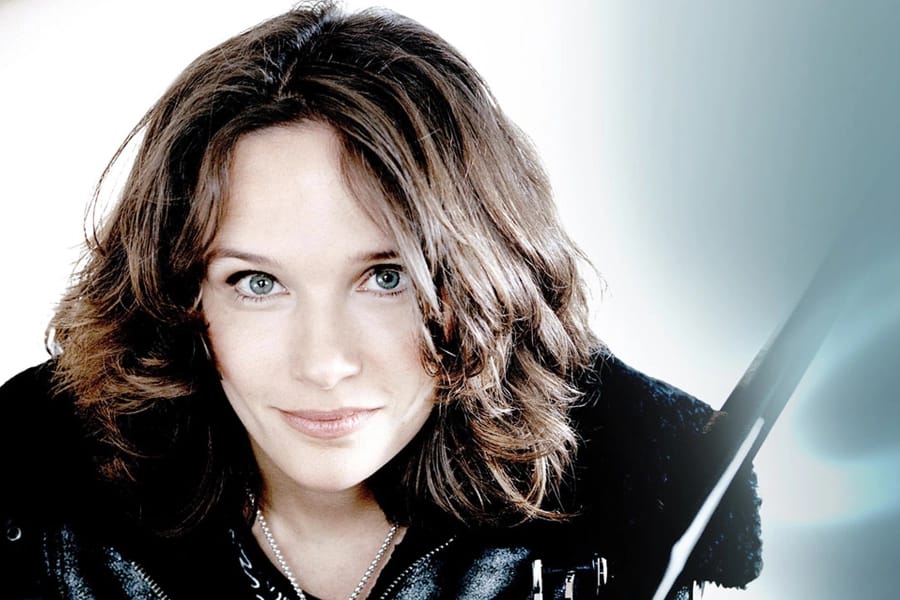
Playing the Beethoven Fourth Piano Concerto, which she calls his ‘most lyrical,’ pianist Hélène Grimaud joins guest conductor James Gaffigan and the San Francisco Symphony for three performances this week, this afternoon, and Friday and Saturday evenings.
There’s more information about the concerts at the San Francisco Symphony website.
The concerto begins with the soloist playing a delicate, unaccompanied passage of five measures before it’s answered by the orchestra. “It’s a journey, for sure,” Grimaud says. “And the responsibility that comes with exposing the material in the very opening of the first movement is quite significant. So it’s a… it’s a humbling task.” This work stands apart from Beethoven’s other concertos, she adds, because of how the soloist and orchestra interact. “You don’t have this role of sometimes opposition. You join with the orchestra, and then you become one… This piece is very dear to my heart. I believe it is the most singular original of his piano concertos. I mean, of course, they’re all different, but this one has a very special quality of philosophical repose, and has a feminine side to it as well. Part of the tonality is feminine… it is the most lyrical of the concertos.” It’s not as brash and showy as the ‘Emperor’ Concerto which followed it. “This one, it runs the full spectrum of expressive possibilities of the pianistic textures. It has, I feel, more of a chamber music-like quality… And is just simply sublime. Also quite avant garde for its time, if you think about how the concerto begins, if you think about the format of the second movement. And as with all great music, it’s the type of piece that you can spend a lifetime working on, thinking about, living with, and it is always going to reveal more and more of its facets as you go.” She says she’s always searching for more depth, and to find ways of saying more, whenever she returns to it. “You have to also come with it with this sense of adventure every time. And truly, through the partnerships with the different orchestras, different conductors, different halls, different audiences. This of course will help to bring it this element of novelty every time.”







